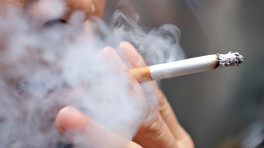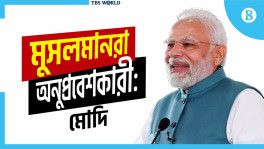From Gujarat to Delhi: The fault line 1947
The citizenship law and the NRC were all drawn up with one goal – to disempower the Muslims even more. The conflict initially a row between pro- and anti-citizenship law activists has ultimately turned into a Hindu-Muslim riot.

We had thought 1939-45 and 1947 were 20th century things, and we had thought we had traversed a whole millennium.
We were proven wrong. Gujarat happened in 2002. We had thought that was it, we have learned another lesson from a lesser intensity event.
We were again wrong. We have now 2020. We have Delhi. We have Modi. We have Trump. We have at least 20 souls lying dead in Delhi morgues, we have the hordes of Hindu crowds swelling and swarming to get at the throats of the city's Muslim community.
We have the whole government of a country, supposed to be the greatest democracy in the world, machinating within the red-bricked building of 11 Ashoka Road, the headquarters of BJP, and at Red Fort about how to turn the screw on the country's 220 million Muslims. How to relegate them to the fringe of the society, both economically and politically.
How to divide a nation based on the idealism that the great founders of the country had eschewed at the birth of the country in 1947.

Sadly, we are in 2020. And the citizenship law, and the NRC. Don't they resound the 1907 Expatriation Act in the USA that revoked citizenship to American women who married non-citizens? Don't they remind us Hitler's idea of a state based on 'race and nationality'?
The similarities between Gujarat and Delhi are eerie. In both places tension simmered for days and weeks. In both places the Muslims lived in ghettos. In both places the attack came suddenly and severely.
And when the attack came, both in Gujarat and Delhi, police were complicit. Hindu rioters walked with sticks and iron rods freely in front of the paralysed police force. In contrast, only a few weeks ago, the same Delhi police, supposed to be the best in India, swung its batons wildly on the female students of Jamia Millia Islamia protesting the citizenship law by entering its campus.
The citizenship law and the NRC were all drawn up with one goal – to disempower the Muslims even more. The conflict initially a row between pro- and anti-citizenship law activists has ultimately turned into a Hindu-Muslim riot.
Similar to Donald Trump, Modi and Amit Shah had used rhetoric and logics that were fundamentally flawed, racist and anti-immigration. Trump had talked about immigrants coming from 'shit-hole countries' and Amit Shah has spoken against the 'termites' in the same way the Rwandan genocide was incited with calls to "kill the cockroaches", the Tutsis in that case.

History sometimes reveals ominous signs. Hindu-hardliner Amit Shah was home minister of Modi's government of Gujarat during the riot there. Now, he is the home minister of Prime Minister Modi's central government and presiding over the police during the Delhi violence. Not surprising that the Delhi police are playing the numb role.
And The Economist back in May, 2019 before the elections, warned that "Under Narendra Modi, India's ruling party poses a threat to democracy" and that voters should 'turf it out'.
But that did not happen and the Indian people elected BJP with overwhelming majority, showing how they want to move away from the founding principles of India. The deep religious hatred that they bore in mind back in 1947, just festered in their subconscious level. And now with BJP and its anti-Muslim laws coming as the elixir, that sleeping monster of hate has raised its head woken from its festering swamp.
That seed had been sown in the Hindutva philosophy by Vinayak Damodar Savarkar who himself was influenced by the Nazi treatment of Jews. Savarkar was arrested after the assassination of Gandhi by a supporter of Rashtriya Swayamsevak Sangh, the mother organisation of BJP of which Modi himself was a member.
So the same lineage has flowed from Savarkar to today's BJP leaders. And so happen Gujarat and Delhi, like some pockmarks on beautiful India.

And don't forget the Kashmir and the revoking of article 370 of the Indian Constitution, stripping Kashmir of its special status that many believe was done to change the demographic profile of the Muslim majority state. Thousands of additional troops were brought in and the whole state was put in a lockdown with curfews, shut down telecommunication and Internet, isolating the population from the world. Political leaders were arrested to choke their voices.
So we see the same pictures of shops belonging to Muslims being burned down and left smouldering. The picture on the New York Times of a blood-stained Muslim man being attacked by a horde of Hindus wielding sticks and iron rods will haunt any human mind for long.
Sadly, India could not fuse the fault line of 1947.
Against all odds, India has been held together for seven decades by its secular constitution that promises equality to all. But Modi's BJP is tearing India apart to turn it into a Hindu state.


 Keep updated, follow The Business Standard's Google news channel
Keep updated, follow The Business Standard's Google news channel
















